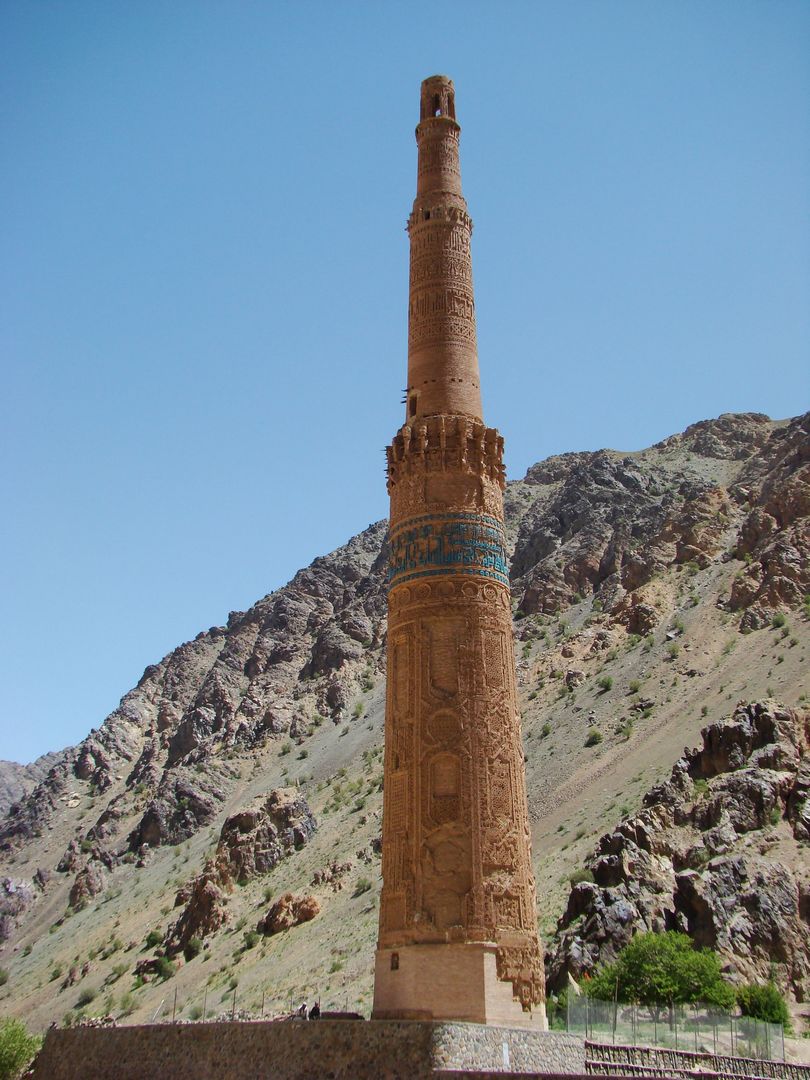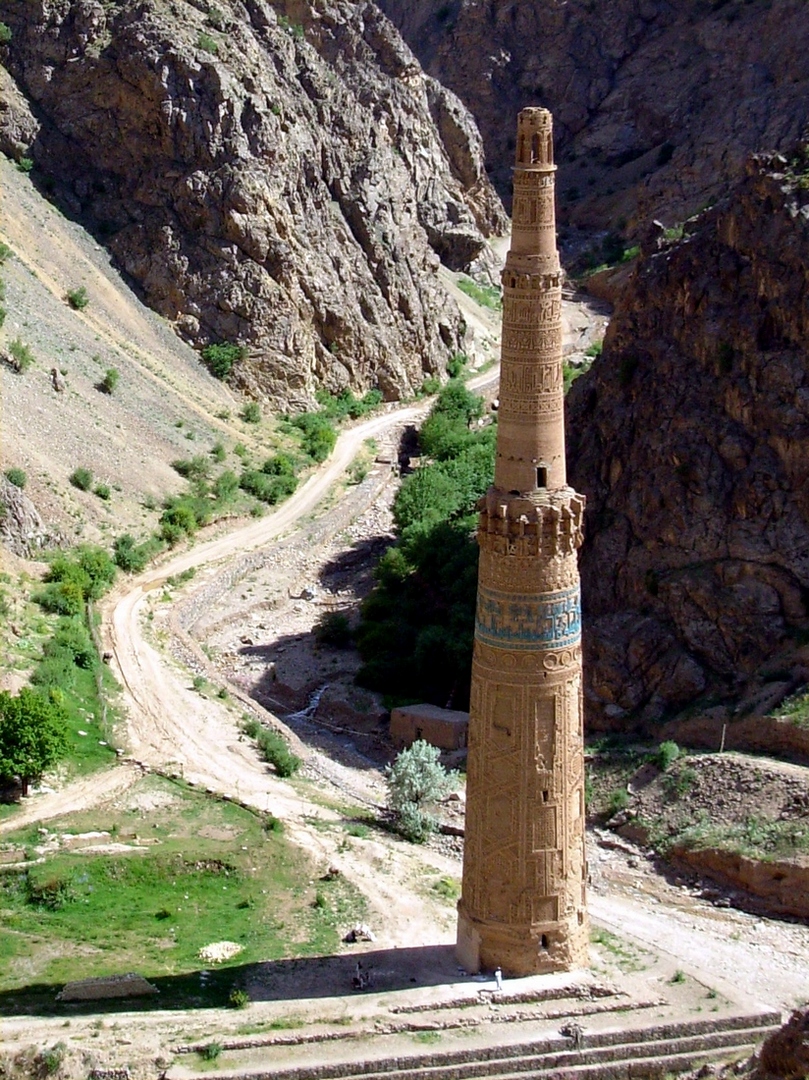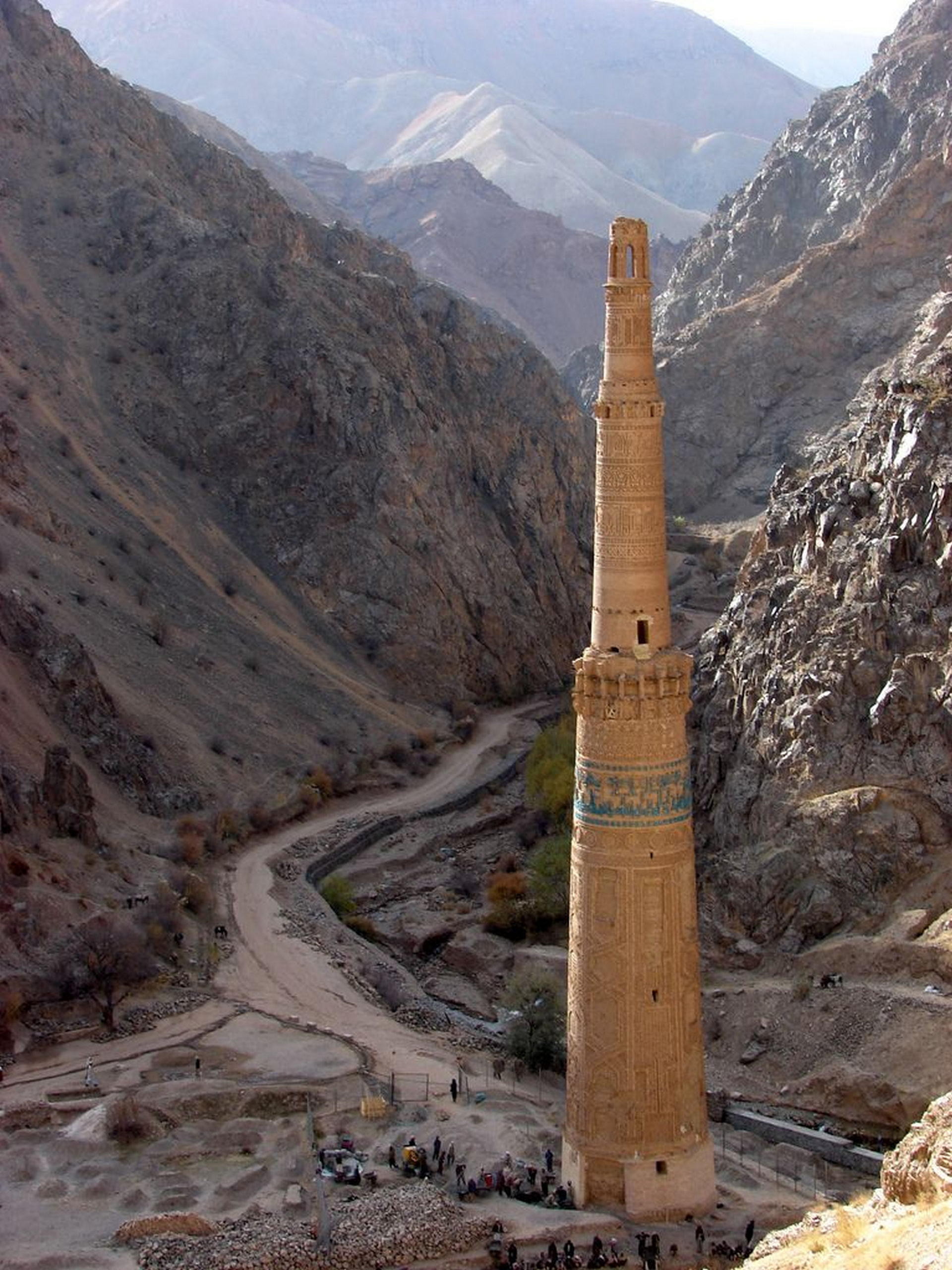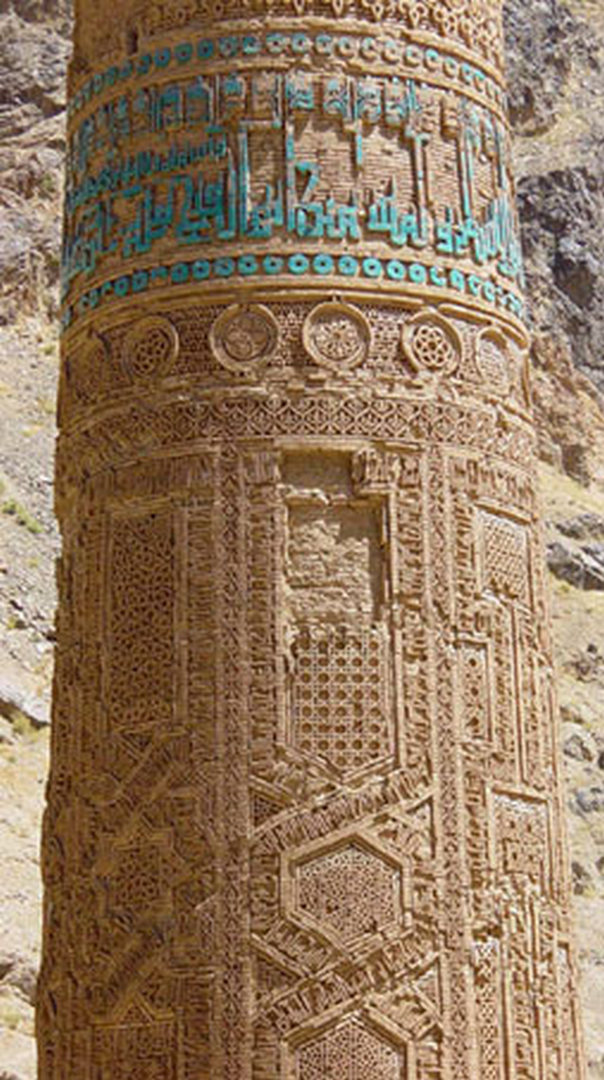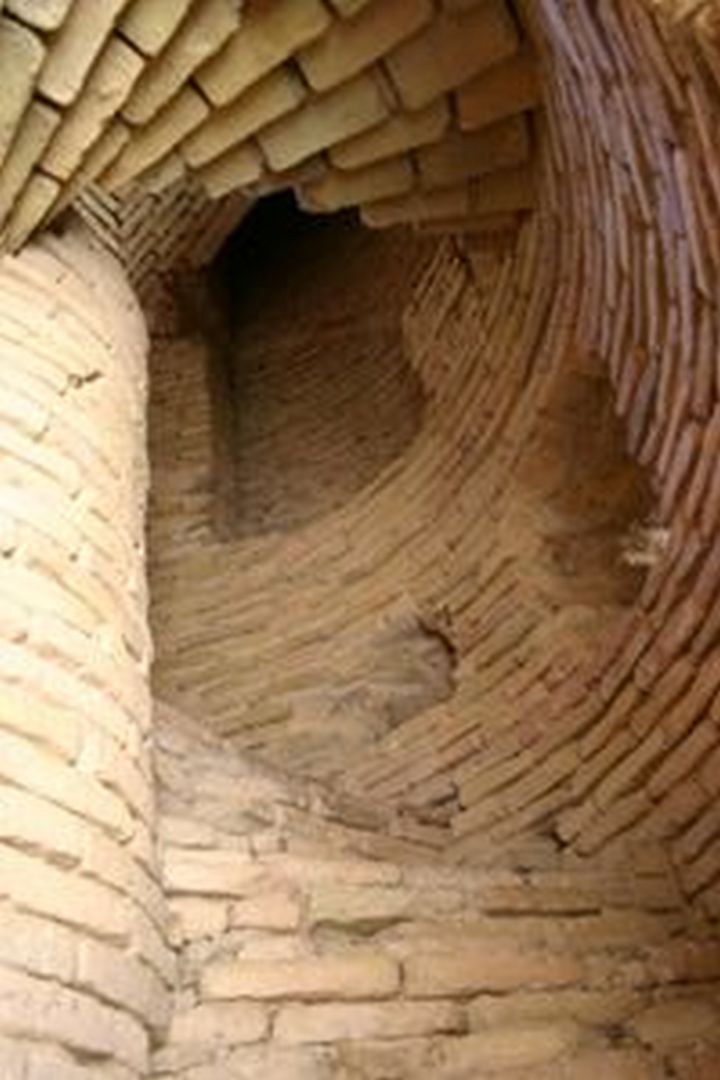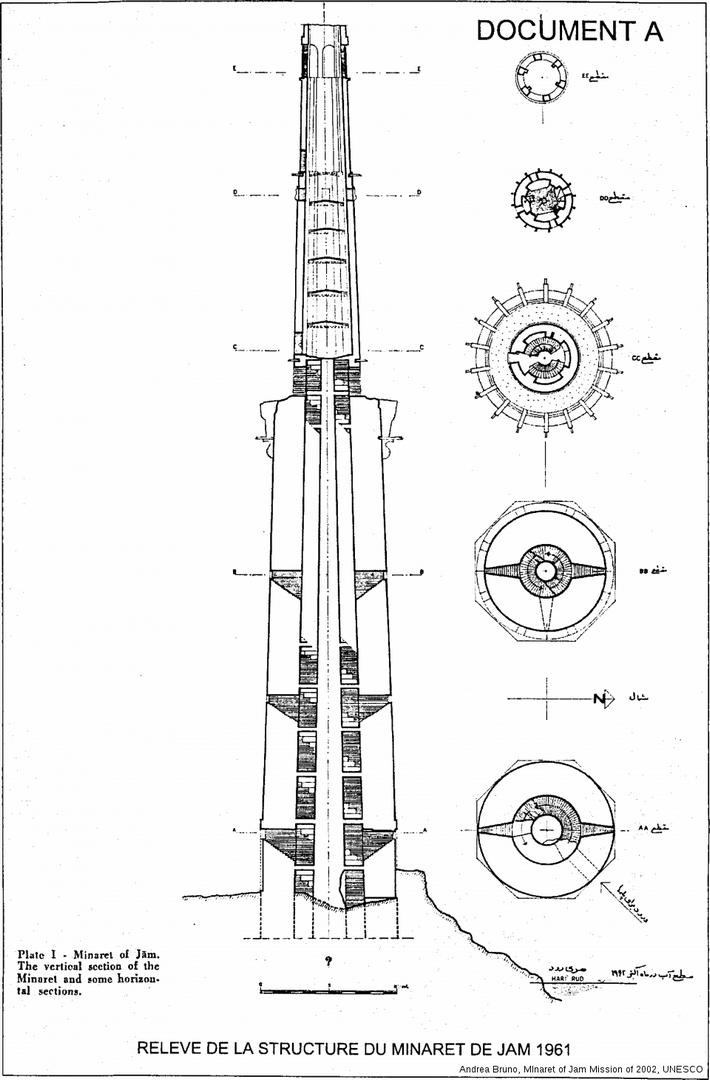Description
Property Name: Minaret of Jam
Inventory No: 93-111-1
Date of infill of the inventory form: 2007-11-16
Country (State party): Afghanistan
Province : Ghor
Town:
Geographic coordinates: 34° 23′ 47.6″ N
64° 30′ 57.8″ E
Historic Period:
Year of Construction: 12th century
Style: Ghurid
Original Use: Minaret
Current Use: Minaret
Architect: Unknown
Significance
The Minaret of Jam and the archaeological remains that surround it bear witness to the short-lived but influential Ghurid Empire which dominated a vast area of western and central Asia. The architecture and ornamentation of the Minaret itself are outstanding from the point of view of art history, fusing together elements from earlier developments in the region in an exceptional whole and exerting a strong influence on later architecture in the region. The Minaret of Jam is the second highest standing minaret in the world, after the Qutb Minar World Heritage property in New Delhi (India), which was directly inspired by the Minaret of Jam.
Selection Criteria
ii. to exhibit an important interchange of human values, over a span of time or within a cultural area of the world, on developments in architecture or technology, monumental arts, town-planning or landscape design
iii. to bear a unique or at least exceptional testimony to a cultural tradition or to a civilization which is living or which has disappeared
iv. to be an outstanding example of a type of building, architectural or technological ensemble or landscape which illustrates (a) significant stage(s) in human history
State of Preservation
According to local sources, it is said that during the Ghurid period the Jam river was controlled by brick masonry walls flanking the stream 1 km upstream from the minaret. The stream was covered at its ends and constructions were built over it. There are traces of brick masonry foundations at the opposite site of the Minaret on the northern bank of the Harirud river, which according to Dr. A. Wasay Najimi, must be a foundation of a bridge leading access from the port of the walled settlement, at the northern side of the Harirud river, to the site of the minaret and the grand mosque/madrassa, now the platform grounds east and south of the minaret. Excavation are needed for further information (cf. Dr. A. Wasay Najimi’s mission report, 30 July- 8 August 1995, p. 3). In August 1963 a temporary dam of stone and timber was built to forestall the danger coming from the building’s structural instability: the minaret was markedly leaning towards the main stream below the Harirud river. This work was carried out with the help of nearby Jam village’s inhabitants. In June 1964, a work program was evaluated which consisted of the following: sample analyses of the bricks and their mortar; subsoil and foundation trial-tests; consolidating with “root-piles” their load-bearing capacity; restoring the structural and relief masonry brickwork and undertaking diverse archaeological test diggings in the immediate surroundings. The complexity and the variety of problems to be overcome in order to adequately restore the minaret made it impossible to accomplish the program within a brief period.
The Minaret and the Archaeological Remains of Jam have a high level of authenticity. Since their construction, no major reconstructions have taken place. The Minaret of Jam has benefitted from emergency consolidation measures placed near the base of the minaret, which has succeeded in preventing the seasonal overflow of the Hari and Jam Rivers from undermining the foundation and base of the minaret to date. The various and numerous Archaeological Remains in the Jam area have been partially documented or recorded by archaeologists since the early 20th century. There have been no restoration or reconstruction work undertaken in the past which have decreased the authentic character of these archaeological remains, although some of the remains have suffered from natural decay, years of neglect, and occasional illegal plundering. A full inventory of all Archaeological Remains is still required based upon further examination and documentation of the individual remains. Today, this structure is well restored and kept under protection by Unesco.
References
Hattstein M., Delius, P. (Ed.), Islam: Art and Architecture; Köln, Könemann, 2000.
Unesco Website: http://whc.unesco.org


